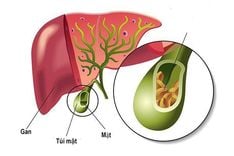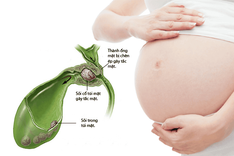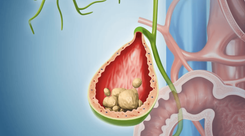Appendicitis progresses very quickly, can rupture, necrosis, making it difficult to treat and easily lead to complications such as enteritis, intestinal obstruction, endangering the life of the patient. Therefore, when experiencing abdominal pain with fever, the patient should go to the hospital for timely diagnosis and treatment.
This article was written under the professional guidance of doctors from the Department of Gastroenterology - Hepatobiliary - Vinmec International General Hospital.
1. What is appendicitis?
The appendix is a thumb-sized organ located on the lower right side of the abdomen, sealed at one end and connected to the cecum (first segment of the large intestine). Appendicitis is an inflammation of the appendix.
The main cause of this condition is infection when the appendix is blocked by:
- Hyperplasia of lymphoid tissue in the appendix wall.
- Fecal stones, parasites or fruit seeds, etc. entering the appendix.
2. Incubation period of appendicitis
Appendicitis pain is the first and always-present symptom of appendicitis. How long appendix pain lasts depends mainly on the condition of each person. Usually the pain comes on very quickly. At the onset of appendicitis, patients often have appendicitis pain lasting 1-12 hours, mainly pain in the right side of the abdomen, the area around the navel and the epigastrium. Next, the pain gradually moved to the lower abdomen next to the right iliac fossa. At this time, the pain will be dull, sometimes the pain increases, making the patient very uncomfortable.

After the pain appears, other symptoms of appendicitis will also manifest within 24 hours. Approximately 65% of patients with appendicitis develop complications of rupture after 48 hours. Therefore, if the patient has severe abdominal pain accompanied by signs of appendicitis such as fever, digestive disorders, etc., it is necessary to go to the hospital immediately for timely diagnosis and emergency treatment.
3. Progression of appendicitis
When a patient with appendicitis is not diagnosed and treated promptly it can progress in the following ways:
3.1 Appendiceal phlegmon
- The inflamed appendix is surrounded by the greater omentum and adjacent structures.
- Clinically, the function will gradually decrease, there is no fever, the patient feels better or the abdominal pain is gone.
- On clinical examination of the right iliac fossa, a hard, cardboard-like patch with indistinct boundaries is seen. It is sometimes difficult for doctors to distinguish between appendiceal masses and appendiceal abscesses.
- Appendiceal phlegmon can develop in two ways: either gradually dissolve, the patient has less pain, reduce inflammation, or form an appendix abscess.

3.2 Appendiceal Abscess
- Acute appendicitis bursts with pus surrounded by nearby organs such as the great omentum, small intestine, forming a localized fossa of pus called an appendix abscess.
- Appendiceal abscess formation time is about 4-5 days.
- On physical examination, the doctor felt a mass in the right iliac fossa, poor mobility, very painful when pressed, and there was a reaction to the abdominal wall.
3.3 Peritonitis
- Appendicitis ruptured purulent partially enclosed or unencapsulated causing pus to spread to part or all of the abdominal cavity causing localized or generalized peritonitis.
- May be localized to the right iliac fossa, lower half of the abdomen or total peritonitis.
- Appendicitis often occurs when patients are diagnosed with late appendicitis.
- Common clinical symptoms are: the patient has a lot of pain in the right iliac fossa, a high fever over 39 degrees Celsius, abdominal distention, and bowel obstruction.
- On clinical examination, the patient presented with pain in the right iliac fossa or throughout the abdomen.
4. Appendectomy
There are two main methods for appendectomy including open surgery and laparoscopic surgery. Traditional open surgery requires a 5-10cm long incision on the abdomen, while laparoscopic surgery only requires a small incision to insert the instrument.
In laparoscopic surgery, the doctor will use laparoscopic surgical instruments with a mini camera attached to enter the abdominal cavity through small incisions. The doctor will then proceed to remove the appendix. This method is often preferred because of its advantages of quick recovery, less pain and minimal scarring.
In cases where the appendix ruptures, the infection spreads or an abscess forms, the doctor will consider the possibility of performing laparoscopic surgery and may place a drainage tube during the surgery. After surgery, the patient needs to stay in the hospital for monitoring for a few days and ensure the recovery process goes smoothly.
In short, because it is an acute disease, the incubation period of appendicitis is not long. When symptoms of abdominal pain appear, especially in the right iliac fossa accompanied by fever, suspected of appendicitis, the patient needs to go to the hospital immediately for examination, diagnosis and timely treatment by surgery to prevent complications.
Please dial HOTLINE for more information or register for an appointment HERE. Download MyVinmec app to make appointments faster and to manage your bookings easily.















